Is it time for Canada and the world to create carbon parks?
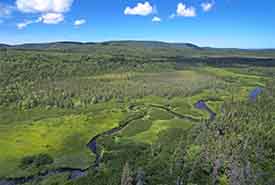
Black River Bog, NS (Photo by Mike Dembeck)
Parks and protected areas have been established across Canada to conserve many things we value. Banff National Park was originally established in 1885 to protect hot springs and breathtaking scenery for tourists. In 1893, Algonquin Provincial Park was set up to protect forested headwaters from settlement and land clearing. Over the last 133 years, more than 8,300 parks and protected areas have been established across Canada. These areas protect many things we value, including rare species, examples of different habitats, spectacular scenery, recreational areas and places of cultural importance.
In a world where rapid climate change is impacting the stability of our planet’s health and threatening the well-being of future generations, we must consider if we need a new type of protected area. And if it is time to establish carbon parks and reserves.
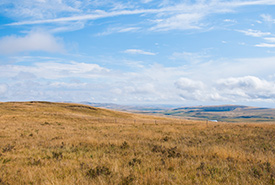
Foothills fescue grasslands, AB (Photo by Leta Pezderic)
Nature plays an important role in carbon storage and reducing carbon pollution. When we lose forests, wetlands and grasslands, we lose species and habitats. But we also lose the carbon that these lands store in soil, roots and stems.
Carbon parks and reserves would support Canada’s internationally agreed upon Target 1 commitment to protect 17 per cent of land and inland waters by 2020. This target also includes conserving areas that are of particular importance for ecological services, meaning places that conserve nature’s benefits to people. In a world that is quickly warming and shifting to a new abnormal, carbon storage is a service that we desperately need.
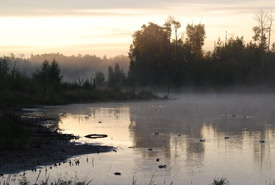
Wetland in Beaver Hills, AB (Photo by Beaver Hills Initiative)
Canada can play a leadership role in establishing a global network of carbon reserves. There are few other places on the planet that have as much carbon stored as Canada. It’s been estimated that our northlands hold an amount of carbon that is equivalent to one-fifth of all the carbon dioxide in the atmosphere today. The release of this carbon from Canada’s northern forests and peatlands would be like a carbon bomb going off. It would move the Earth into uncharted levels of atmospheric carbon dioxide. This would accelerate the changes to our climate that we are already witnessing.
In Canada, much of this carbon is stored in peatlands, a type of wetland often referred to by its Cree name: muskeg. Peatlands cover only three per cent of the planet’s surface, but store more carbon than all of the world’s forests combined. Many of the peatlands in Europe and in tropical nations have been lost and degraded by clearing and drainage, releasing their carbon into the atmosphere. Canada has more peatlands than any other nation, and most of these are still intact. Protecting wetlands, forests and grasslands that hold carbon can be Canada’s most important global contribution to climate change.
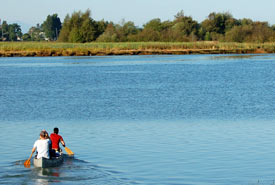
Paddling to Swishwash Island Nature Sanctuary, BC (photo by NCC)
Carbon parks would have many other benefits. They would protect some of the world’s last areas of true forest wilderness and important wildlife habitats. They would maintain water quality. They would complement ongoing conservation efforts by Indigenous communities. Carbon parks in southern Canada could play a critical two-for-one role in climate change. Wetlands, forests and grasslands store carbon, but also help to buffer nature and people from the increasing number of extreme weather events, such as floods and drought. The protection of these places also protects the quality of our drinking water and provides places for recreation. These are nature-based solutions for a new low-carbon economy.
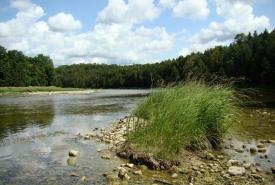
Maitland River, ON (Photo by NCC)
Canada’s protected areas already hold vast amounts of carbon. This has happened by default, and not by design. We are a big country blessed with a rich endowment of nature, but it could slip away without our action. Wetlands, forests and grasslands are continuing to disappear, and with them, and opportunity to work with nature as a partner in reducing the impacts of climate change. This is a loss for nature, and a loss for Canadians. Climate change brings a new urgency to expand our protected areas system with new parks and Indigenous Protected and Conserved Areas, and by working with private landowners through organizations such as the Nature Conservancy of Canada and the Natural Areas Conservation Program.
By incorporating biodiversity, carbon storage and climate change adaptation into protected areas, we can accelerate the conservation of our lands and waters, and reduce climate uncertainty for our children.


